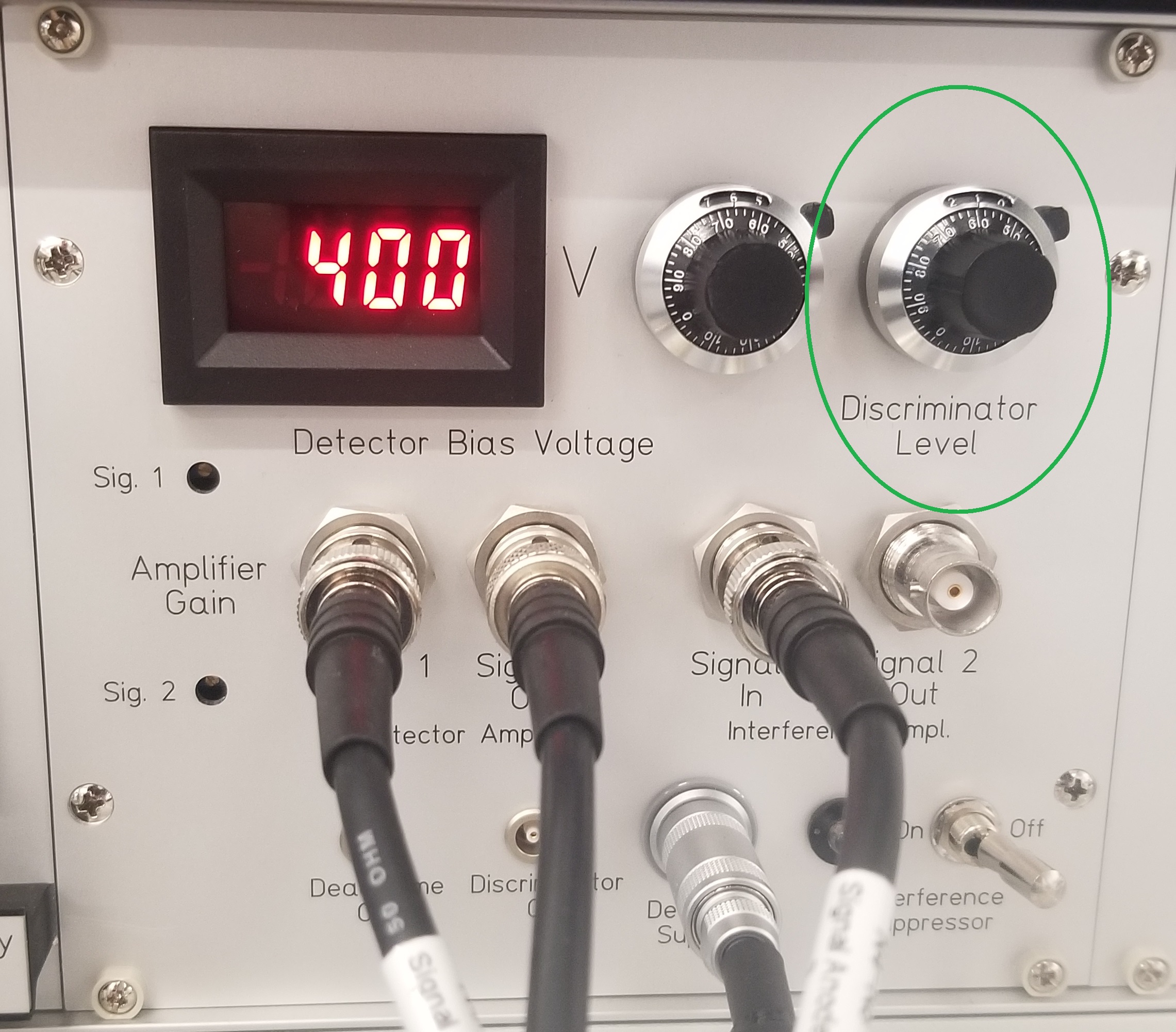An OxII standard was inserted.
A Single run with 250 ten second long cycles was run and the currents were allowed to settle.
Starting at Cycle 100, the discriminator was set to 2.2 V.
Every 5 cycles, the discriminator was lowered by 0.1 V until electronic noise began to saturate the count-rate (0.7 - 0.5 V). See the following plot for the view in ACS of this test.

The above data was copied into Microsoft Excel. The average 14C/12C ratio was computed for each segment of 5 cycles and plotted against the corresponding discriminator value as seen below:

Examining the graph, the 14C/12C ratio is cut roughly in half between 2.0 to 2.1 V on the discriminator. This is where the average pulse height is.
Two thirds of 2.1 V yields a setting of 1.4 V as a final discriminator setting.
